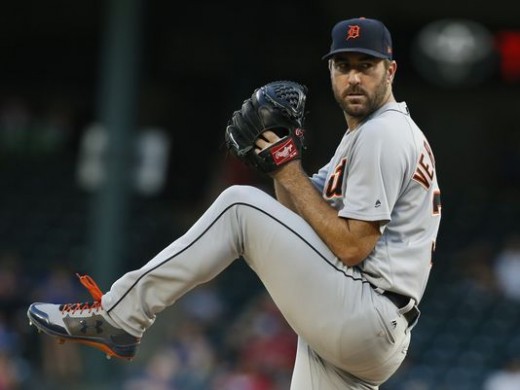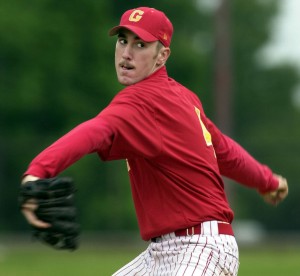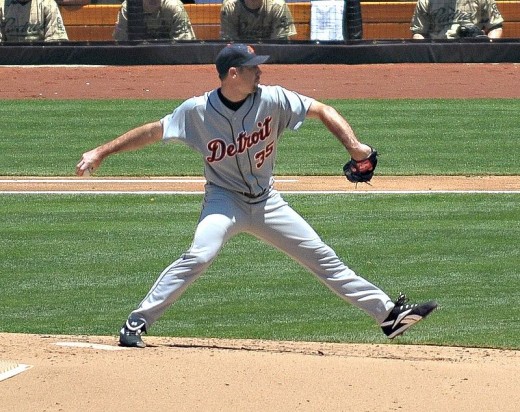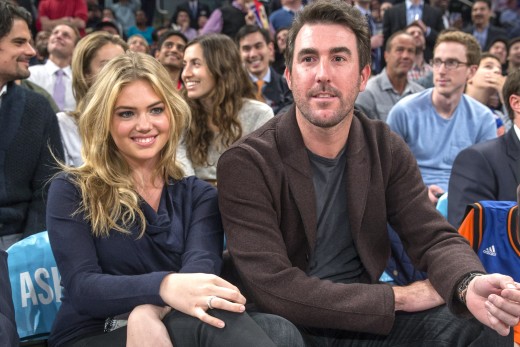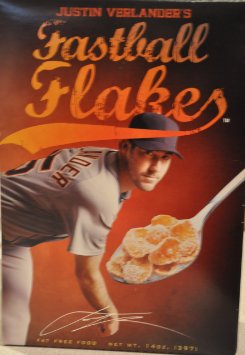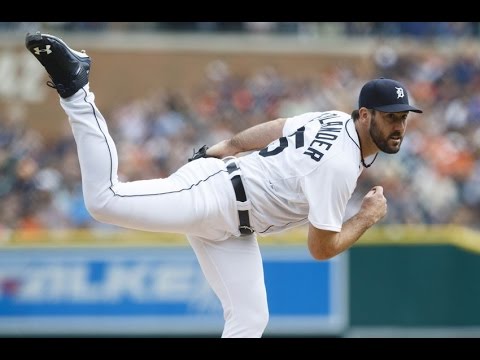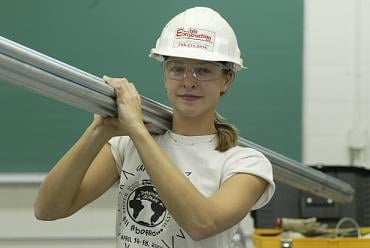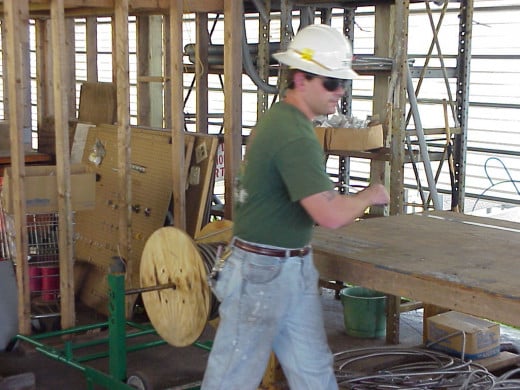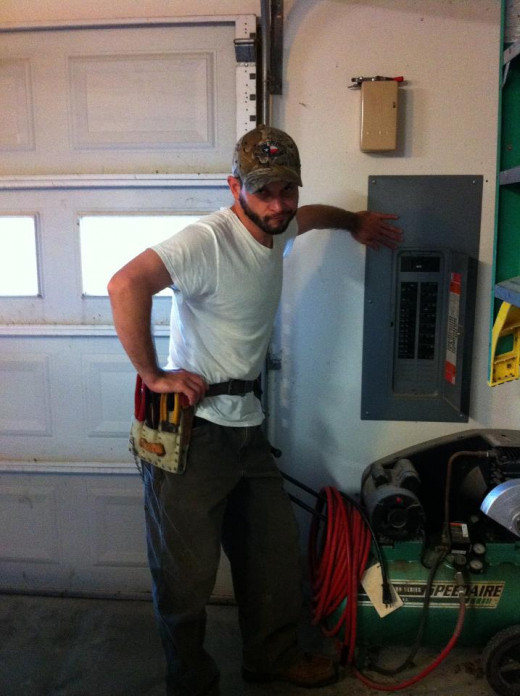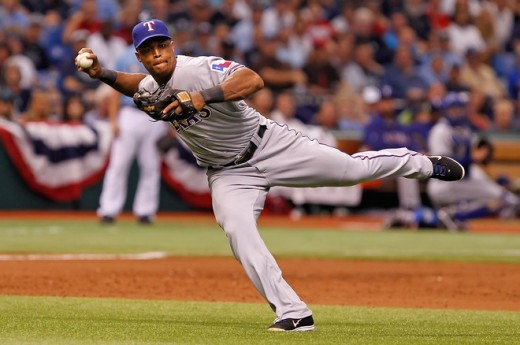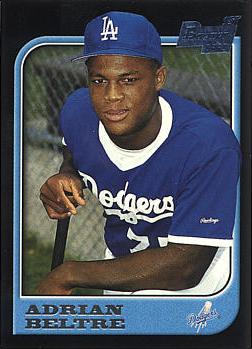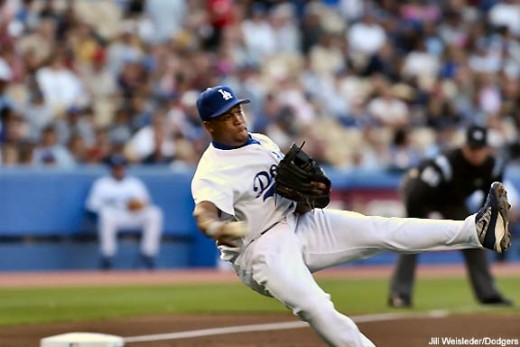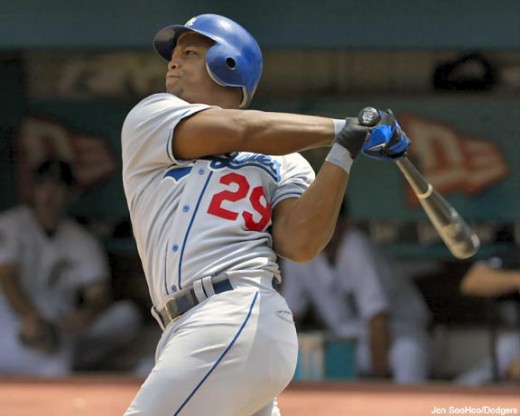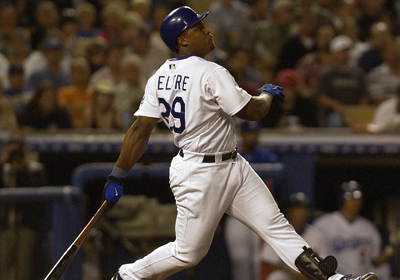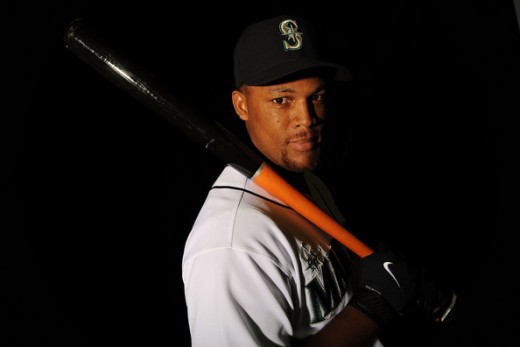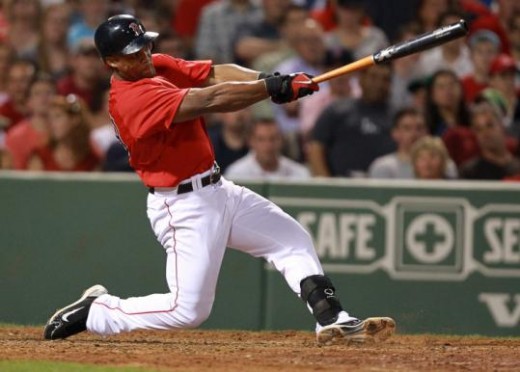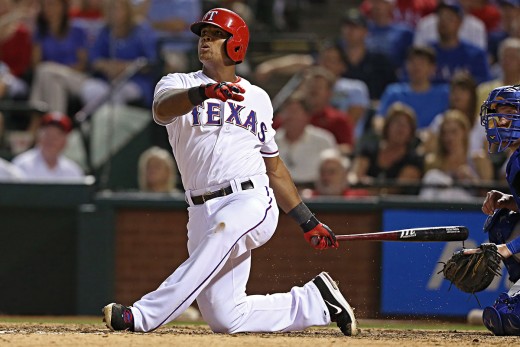Myself, I'm seriously hoping for Miguel to have some great seasons before he retires. I'm not ready for him to be a has been just yet.
Mighty Miggy
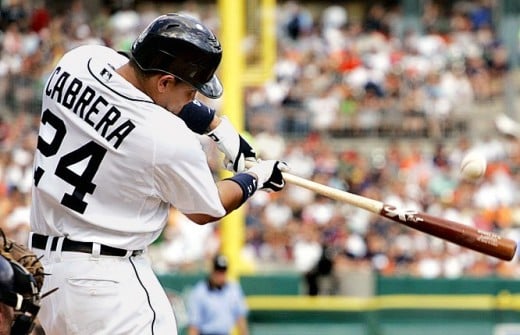
When you think about Major League Baseball players who are playing right now who are also already persons you know will make the baseball Hall of Fame in Cooperstown, you think of Miguel Cabrera. In fact, he may be the single first person you think of. The reason is he's already put together a HOF career, and he's still, for all intents and practical purposes, in the prime of his career.
The man we call Miggy sure has an impressive resume. His offensive statistics are a sabermetrician's dream come true. Then there is that thing about the triple crown, and him being the only person to do that in so long. He could do it again, but then there are also some other guys playing who may equal the accomplishment. Maybe this season, maybe the next one.
Seven times in Miggy's first ten seasons in the Big Leagues, he placed in the top five of the league MVP voting. Is Miguel Cabrera the greatest hitter of his generation? Possibly, but his generation also includes the greatness that is Albert Pujols.
Miguel Cabrera Vs. Albert Pujols
Comparisons are never really 'fair,' but baseball is a game where comparisons never cease. We never stop comparing this guy to that guy, and so the Miguel to Albert comparisons are totally delicious. They compare so very very well, and so wonderfully.
Through the first ten big league seasons, hands down, Pujols is the better ball player. But while Pujols seems to be slowing down as he ages, Miguel Cabrera seems to be getting better. It can happen. You also have to recognize the sample size for Cabrera is smaller. The Cabrera to Pujols comparisons are not going to end any time soon, but eventually they will end, and that will be when both of these HOF sluggers are retired, and then only. That either, or of them is, or are the greatest right handed hitters in baseball in a living man's memory, this seems something unquestionable. But give Mike Trout some time here. He may enter this equation with a larger sample size himself.
You look at a guy like Nelson Cruz, or Joey Bautista. Neither one of those guys started off too well in the big leagues. Then they became monster power hitters. So Cabrera and Pujols started their careers as perennial MVP winners or candidates. There's no reason Cabrera, now 32 years old, can't become even better than he was when he won the triple crown. Nelson Cruz has had his best season to date at age 36.
Study the master, this is perfection in a swing at the moment of contact, from Miguel Cabrera
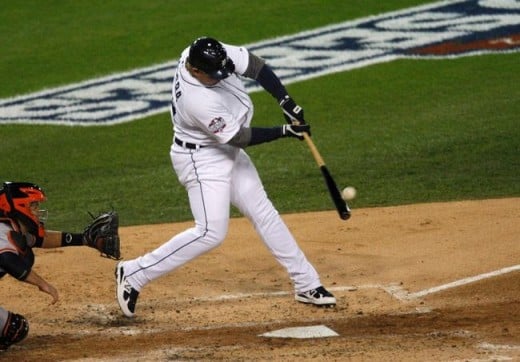
What makes Miguel Cabrera so dang good at hitting?
When it comes to hitting a round ball with a round bat squarely, there is no one in baseball at present who does this, and consistently hits the ball harder than does Miguel Cabrera. He's led the American League in batting average 4 times to date. He's won two AL MVP awards, and won the first triple crown in batting in the MLB in the last 50 years.
Ten times he's been on the All Star team, He rarely ever strikes out, and he rarely ever hits a weak rally killing pop up fly. He's had 9 seasons so far of 30 or more home runs, and had 11 consecutive seasons of 100 or more runs batted in. The streak of seasons with 100 or more RBIs ended last year because Cabrera spent some time on the disabled list. He still won the AL batting title in 2015.
But what is it that makes Miguel Cabrera so dang good? HOW is the the best hitter in the entire Major Leagues? There is a great article about this over at USA Today. In the article, four persons who've been greats in Major League Baseball are asked what it is about Miggy that makes him so very very special as a hitter. Al Kaline says it is that Cabrera hits the ball so very hard to all parts of the baseball field. Tori Hunter says it is something about Miggy's character, the way he is so very humble, and works so very hard. Chris Davis says it is Cabrera's balance which makes him such a great hitter. Wally Joyner echo's Hunter, he says Cabrera is a supremely respectful man.
A graphic with some bullet point analysis of the great Miggy Cabrera's swing
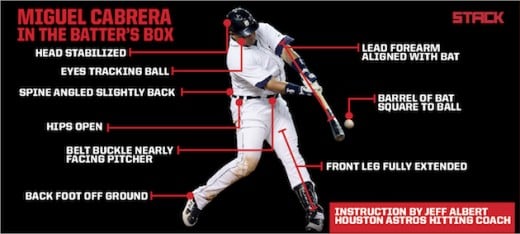
What Miguel Cabrera has can't really be taught, but there is a science to hitting
When I was a kid, I spent countless hours hitting balls with sticks and bats and just doing it over and over and over again. But that wasn't all I did. I studied the great hitters on television, experimented emulating their batting stances, and tried to figure out which one worked best for me. Then, I got into reading about it. There are entire books on the philosophy of what makes a great hitter, and then the studies of the mechanics of swinging the bat. As well meaning as Al Kaline, Tori Hunter, Chris Davis and Wally Joyner were in their comments in USA Today - none of that said was the slightest bit useful to a kid trying to learn how to hit.
With Miggy Cabrera, you can't exactly emulate his swing because he sometimes changes his entire batting stance several times in a single at bat. Also, Cabrera has freakishly good eyesight, all the great hitters do, and there is no possible way to teach that to someone, it is a gift from God. Then, there are the reflexes. One must have near super-human reflexes to hit 100 mile per hour fastballs. And there are not more and more pitchers in the game today, than ever were before, who can reach back and hurl a 100 mph bullet ball up there.
He also seems able to read the minds of pitchers. Cabrera approaches each and every at bat as a psychologist. He's analyzing the pitchers and what they do in different situations, he's guessing what pitch they are about to throw him, and he guesses correctly very often.
So you are a kid, want to be a professional baseball player, and you daydream about being as great a hitter as Miggy, as Bryce Harper, persons like that. You can't emulate Cabrera's stance because he has dozens of them. What do you do? You emulate his work ethic, you emulate his scientific approach to each at bat, to each pitch.
Ted Williams, the Hall of Fame slugger who was the last person to ever hit for a .400 batting average wrote a great book about hitting, and who could ever discredit Ted's theories? No one, but that said, the Charlie Lau school of hitting is also a very highly thought of approach. Not every baseball player has the body to hit home runs, if you're going to be a line drive guy, someone who hits lots of doubles, triples, and singles, you study the Charlie Lau approach, but Charlie Lau style hitters still hit for power. George Brett was everything Lau used to teach. Sometimes Cabrera's swing is a Lau type of swing, sometimes it isn't. Only Miguel Cabrera is Miggy, there isn't another one. There won't be, either.
A much younger Miguel Cabrera with the Miami Marlins
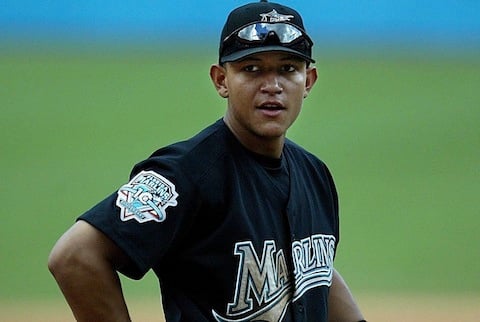
Miguel Cabrera's least impressive years would be career year for many other great players
He's so synonymous with hitting you forget sometimes Miggy was once known for having a cannon for a throwing arm. He's still got the arm. Like Albert Pujols in yet another way, Cabrera has played 3rd base and 1st base, but at one time was primarily an outfielder. While he wasn't the most elegant outfielder there was, he had 13 assists from the outfield in 2004. That's 13 runners gunned down by his cannon like throwing arm.
One of the more telling stories from the early days came in Miggy's very first season. He helped lead the Marlins to the post season, where they faced off against the Yankees. In the first at bat in which Miguel ever saw Roger Clemens, Clemens threw Miggy some chin music, a 92 mile per hour fastball just under his chin. Cabrera famously glared out at the mound. He looked as though he may charge the mound to fight Roger the rocket. Instead, he hit a home run a couple pitches later.
Cabrera was winning Silver Slugger awards as an outfielder with the Marlins. The Silver Slugger is given to the best offensive player at each defensive position in a given year. He put up elite numbers in Miami, and was making the All Star team annually, as he deserved; but what is funny is his worst seasons to date are seasons where he was an All Star with the Miami Marlins. His worst years insofar as batting statistics go, were good enough to be career years for some people who've since become Hall of Fame players.
To date, Miggy's bad year was 2004. He was just 20 years of age. He hit 'only' .294, had 'only' 33 home runs, and drove in 'only' 112 RBIs. His OBP of 'just' .366 would be a dream come true for anyone but Miguel Cabrera.
In 2007 Miguel became the 3rd youngest player to reach 500 runs batted in for his career. The only persons to achieve that number at a younger age were Ted Williams and Mel Ott. One of the many players in the MLB from Venezuela, Cabrera is the most impressive. The level of competition now seen in Major League Baseball is so far and gone more impressive than in the old days before Jackie Robinson. Thank God above for the integration of baseball, a truly international sport.
The great Miguel Cabrera with the Detroit Tigers
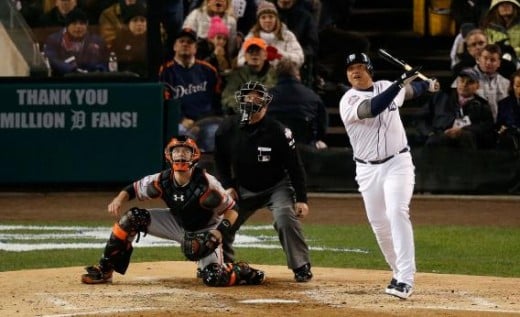
Miguel Cabrera becomes one of the greatest hitters of all time in Detroit
The trade that sent Miguel Cabrera from the Marlins to the Detroit Tigers is ancient history now, but man, what a bum deal it was. Cabrera was already one of the elite hitters in baseball, and what he became in Detroit was one of the elite hitters of all time in Baseball, not just an elite for the day or the year. What Miami got for him? Forgettable. Best forgotten, actually, if you are a Marlins fan.
If you are a Tigers fan, the deal that brought Miggy to Detroit has got to be the single best swap in the history of the game for you. For Miggy, though he was already a major force in baseball, he grew into his prime in Detroit. Became an infielder in his first year there, and led the American League in home runs in his second. In 2009 he had his sixth straight season of more than 100 runs batted in. But Miggy was reaching milestone after milestone, and he's still doing so today. When you've got the talent Cabrera has, changing leagues doesn't affect you much, or at least not for long.
He did lead the American League in errors at first base in 2010. Miguel is not a poor defender by any measure though.He also led the AL in runs batted in, with 126. By 2011 he was demonstrating what folks suspected, he was perfectly capable of winning a triple crown in hitting. He won his first batting title by hitting .344, a career best at that time. Winning a batting title is always harder for right handed hitters because a a right handed batter has to take a couple extra steps to get to first base. But he won more than just the batting title, he led the AL in doubles with 48. Miguel's league leading on base percentage was .448. He reached base almost 50 percent of the time he came to bat!
2012, 2013 Miggy wins a triple crown and two AL MVP awards
In 2012 Miguel did what hadn't been done by anyone since 1967. He won a triple crown in hitting. The triple crown, of course, is won win the hitter leads his league in home runs, batting average, and runs batted in. Miguel hit for a .330 average, which for him, wasn't so impressive. He'd hit for higher averages in past seasons. He hit 44 home runs, which ought to be enough for anyone. While a .330 batting average isn't always high enough to lead a league, 44 home runs is more often than not. He also knocked in 139 runs, and 139 runs batted in is a very impressive statistic for any single season.
In 2012 Miguel wasn't playing 1st base. The Tigers had signed Prince Fielder, and he was their first baseman. So Miggy was playing 3rd base in 2012. Who knows how the defensive position he played figured into any of this? Maybe it did, maybe it didn't. Before the season began Miguel was hit by a ball in the face, breaking a bone beneath his right eye. There is always something amazing going on in the stories we have about the amazing humans among us, and this is one of them. Somehow a broken bone beneath Miguel's right eye didn't faze him any.
So Miguel Cabrera won the triple crown and the American League MVP in 2012. His 2013 season was probably even more impressive. In 2013 he hit for the same number of home runs, 44, but he hit for an even higher batting average. He won the batting title again in 2013 with a higher .348, a career best. His 44 home runs in 2013 were not enough to lead the American League. His outstanding 137 runs batted in were not league leading either. But in 2013 Miggy Lead the AL, besides in batting average, in on base percentage (.442), slugging percentage (.636) , and rather obviously, OPS. He won his second straight AL MVP award.
Miguel Cabrera - 2014 to present
Baseball is a game of statistics, and all statistics are analyzed over and over and over again. What's amazing is it has always been this way, and there are only ever more and more kinds of statistical analysis added as the game grows older. One of the newfangled and super sexy statistics used now is the WAR. WAR stands for wins above replacement. The triple crown is a very sexy accomplishment, if you follow my meaning, in a statistical sort of way. And so if you are a big believer in the WAR analysis, Cabrera was better in 2013 than he was in 2012, when he won the triple crown.
Just in case there is a reader here who isn't familiar with WAR, then I've got a nice link here so you can brush up on it. Here is FanGraphs explanation for WAR. I've got another great link for you to see Miguel's WAR over the years, and you would likely note with a lot of septicemic, as I did, how low of a WAR rating he had in 2008. Here's the link, from numberfire.com. But the link is really about what happened after Miguel won two straight American League MVP awards. He seemed to have gone into decline. But you're talking about a decline from having some of the best offensive seasons in the entire history of Major League Baseball. A Miggy decline year is a career year for most anyone else.
Commentary on the numberfire website is strange. They venerate WAR ratings, then talk about Cabrera's 2012 season as though it were better than his 2013 season. But his WAR rating was better in 2013. So I'll leave it to you, dear reader, to figure out which season was the better one. In any event, Cabrera is a professional athlete, and professional athletes always wind up with injuries, and Miggy is no different. He tailed off in productivity in 2014, had a surgery to get himself ready for 2015, then won another batting title in 2015 despite having to miss a lot of games due to injuries. So here we are now in 2016. The season just started, and the Tigers of Detroit actually have a bargain in paying Miguel Cabrera just $22 million. Can he return to MVP status? I wouldn't bet against him. I'm rooting for him, and so should you. He's the finest hitter in baseball, and likely will be remembered as one of the single best right handed hitters in baseball history, if not one of the single finest hitters in baseball history, period
